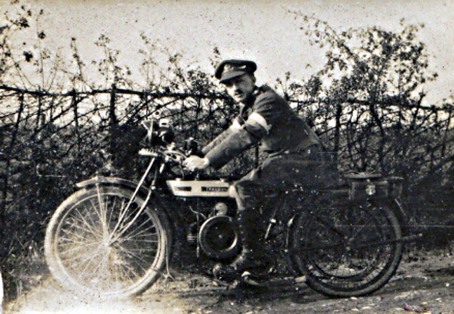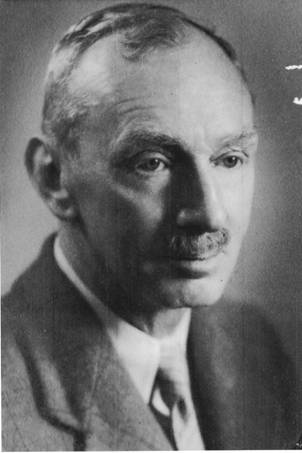View entry
Name: POLHILL, Stanley Frederick Philip


Nee: brother of Theodore Robert Polhill
Birth Date: 10 May 1891 Pa Chew, China
Death Date: 2 Oct 1970 Naivasha
First Date: 1919
Profession: Farmer. Went to Kenya to take charge of the monster machines imported by Powys Cobb. Bred an improved strain of pyrethrum which he gave away to his neighbours and which is still being grown.
Area: Kinangop, Molo
Married: In Highbury, London 4 Sep 1916 Evelyn 'Eve' Davidson Wood b. 3 Mar 1893 Stoke Newington, d. in a car accident 10 Mar1978 Naivasha
Children: Barbara Evelyn 'Barbie' (m. Jim Nightingale) (26 Oct 1917 Ayrshire- 13 July 1992 Nairobi); Phyllis Kathleen (Tooley) (17 Mar 1919 Edmonton-14 June 1966 Eldoret); Pamela Eleanor (Welmans) (21 Sep 1929 Nairobi-1998); Robert T. 'Bob' (d. 28.3.1998 Australia); Roger Marcus Stanley (21 Nov 1937 Nairobi)
Book Reference: Midday Sun, Red 31, Hut, Pioneers, Burke, Naivasha
War Service: Capt. RFC, served in WW1 (despatches twice)
School: Jesus College Cambridge
General Information:
Arthur and Alice’s five sons were all born in China. The youngest, Theo, was born on the eve of the Boxer Rebellion in 1900, when the family was forced to return to England for their own safety. Stanley’s parents returned to China as soon as it was safe to do so. They left Stanley and his brothers with their uncle Cecil at Howbury Hall, while they travelled back to China overland across Siberia, taking only baby Theo with them. At the age of 14 Stanley was enrolled at Trent College near Nottingham, a newly-founded public school. There he was an enthusiastic member of the OTC, and did well enough academically to go up to Jesus College, Cambridge in 1910. All but one of Stanley’s brothers went into the Church or medicine, but Stanley chose otherwise. Maybe conscious of his father’s precarious profession as a missionary, he chose to qualify in a profession that would provide a dependable income. He studied physics and engineering at university, and after he graduated in 1913 started a traineeship with a major engineering firm in Bedford. By that time he was an enthusiastic motorcyclist. He had run the motorcycle section of the Cambridge Officer Training Corps and owned a Scott motorcycle which he used for touring.
Stanley was one of the earliest volunteers to arrive at Chatham. Nicknamed ‘Pollers’, he made an immediate impression on the Royal Engineers. Though small in stature – his son describes him as diminutive – he had natural authority, and he was put in charge of the group of motorcyclists with whom he travelled to Ireland. On arrival at Carlow the commanding officer of 5th Signals Company, Captain Doherty Holwell, immediately promoted him Sergeant. Stanley had other pressing matters on his mind at that moment. He was courting Evelyn Davidson Wood, daughter of another missionary, and was on the brink of proposing marriage. When he set off for Chatham, he expected that, once recruited, he would be allowed a day or two at home to settle his affairs. However, he learned that he would have to stay at Chatham until he left for Ireland. So he put his proposal in a letter – apologizing for using the war as an excuse for not popping the question face-to-face!
Polhill is rarely mentioned in ‘Adventures’, but his own letters and photographs complement Watson’s story. Stanley was probably the most proficient photographer in the group. He was also an experienced engineer, and in his letters (see Timeline) we find the authentic voice of the motorcyclist. As the Army would not accept his own motorcycle, he was issued with a brand-new machine. Riding it for the first time en route to Euston, he purred: “my Triumph is a perfectly lovely bike, extraordinarily powerful and smooth-running”. Looking ahead to an early end to the war, he said he was “rather hoping to be able to take it off the Government at the end at an absurdly low price if the engine is still in good order”. A month later, he is still enjoying the machine, but cautious of the wear and tear. “I’ve got a cracked front spindle which I have to nurse over pavé, but the engine has run beautifully every day and night.” The Douglas he rode in 1915 was a much lighter machine, maybe better suited to a rider of his stature. After the shock of the Retreat and then the bitter fighting and stalemate of late 1914, Stanley’s mood seems to have changed. Two weeks into the campaign he was distressed by the sight of abandoned vehicles, but six months later, he talks about despatch riders’ casualties almost casually. With the benefit of hindsight it seems that the gloomy casualty figures for motorcyclists were inflated, but there were daily risks to face, and Stanley writes about being “wonderfully fatalistic” about the fact that you can’t hide from shells on a motorbike. No doubt Stanley’s leadership in 1914 contributed to the effectiveness of the Unit and the cohesion of the group in a warm and friendly atmosphere. After the turn of the year, members of the original group began to leave with commissions, and the motorcyclists, who had briefly enjoyed excellent facilities at Locre, were uncomfortable, to say the least, in their winter accommodation at St Jans Cappell. There, according to Overton, Stanley had a disagreement with the senior warrant officers and was transferred to the 2nd Army Signal company. Soon afterwards he was commissioned in the Royal Engineers, then shortly transferring to the Royal Flying Corps. Though Stanley was the only member of 5th Signal Company to join the RFC, it is known that the Royal Flying Corps conducted recruitment drives. The RFC conducted recruitment drives in France for men who could ride motorcycles. Unsurprisingly, our database of despatch riders shows that those who went to the RFC had a higher fatality rate than those who remained with the Signal Service. As well as the airmen who lost their lives in combat over the Western Front, many others sadly were killed or seriously injured in training accidents or on development flights at home. Stanley served on the Western Front as an observer for ten months, and then returned to the UK to train as a pilot. Much of his later career was as an instructor. After completing his first tour of duty as an observer on the Western Front, he and Evelyn married, and their first daughter was born in Scotland.
After the war, Stanley continued to ride regularly, using a motorcycle to commute to work in London from a cottage near Epping Forest which he and Evelyn bought. Engineering work was hard to find, and in winter it was a long and cold hard journey twice a day. They now had two young daughters, and in 1921, when he was offered a position as engineer on a farm in the Kenya Highlands which was being mechanised, the offer was too good to turn down. Stanley set off for Africa with his youngest brother Theo, and the brothers worked for the farm as engineer and accountant. Soon Evelyn and the children followed them. Unfortunately, their hopes of a secure long-term future were dashed. In 1925 Stanley sustained serious injuries in a bad accident – he got caught up in the unguarded moving chains of a harvester. He was fortunate to survive but, having lost a lung and several ribs, he was hospitalised for months. There was no prospect that Stanley would be fit for employment for a long time, so Evelyn took charge and found the family an abandoned farm where they could settle. Over the next twenty five years they turned it from a basic homestead into a productive business, and raised their four children there. In 1963 they retired to Lake Naivasha where Stanley died at the age of 79. After leaving for Kenya in 1922, he returned to England only once, to attend his son’s graduation at Cambridge from the college where he himself graduated 45 years earlier.
